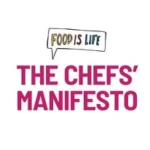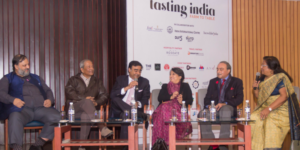
Since 2013, Sanjoo Malhotra has been working with the Embassy of India, Incredible !ndia and CII to promote Brand India through the India Unlimited. A Welcomgroup Graduate School of Hotel Administration and Stockholm University alumnus, Sanjoo also organises guided tours to India and has appeared on Indian cookery shows on Swedish national television. Sanjoo co-founded Tasting India Symposium as he has a deep interest in showcasing India’s gastronomical heritage to the world and creating a sustainable food culture in India.
Can you please tell me a bit about Tasting India?
With a population of more than 1.3 billion people, India is characterized by its diversity, as seen its abundance and range of food cultures that change every 50 to 100km. India’s diverse tapestry offers two magnificent opportunities for advocates of the sustainable food movement:
One, it positions India as a unique, under-discovered culinary destination that, if promoted to the world, can bring a new kind of tourist to India- a tourist in search of new food experiences. Secondly, India’s wealth of climate-smart ingredients hold the answers to sustainable food systems and improved livelihood security. As these ingredients remain largely unknown to the world, greater marketing of these ingredients could position India as the go-to source for these products.
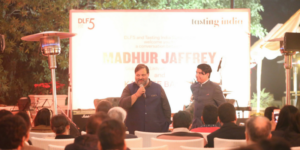
Photo: Tasting India Symposium
Launched by Sourish Bhattacharyya and myself in 2017, Tasting India Symposium will establish bridges that create these sustainable-focused, cross-market dialogues, and in doing so, give the world a different flavour of India. The Symposium will promote a global dialogue around India’s gastronomic heritage and culinary tourism potential by highlighting the country’s agricultural diversity, its farm-to-fork innovations and sustainable food culture. In its second year, the Symposium triggered a movement for the preservation of regional Indian produce and a sustainable food culture. Tasting India along with its partners started an initiative called Young Chefs Forum for Sustainable India. To deliver these aims, Tasting India Symposium has created the Indian Food Manifesto: Working Towards A Sustainable Food Culture, comprised of the following 10 Pillars:
- CREATE A SMART FOOD NETWORK
- SUPPORT TRADITIONAL PRODUCE
- RAISE AWARENESS ABOUT INDIA’S FOOD TRADITIONS
- ADVOCACY FOR TRADITIONAL FARMERS
- ACCELERATE GASTRONOMIC TOURISM
- PROMOTE EXPERIENCE TRAILS
- POPULARISE PRINCIPLES OF AYURVEDA
- PROMOTE SUSTAINABLE FOOD CULTURE
- REVIVE INDIA’S HERITAGE FOODS
- CREATE ROBUST CERTIFICATION FRAMEWORKS
Tasting India will be hosting the Eat Right Symposium from the 13th to 15th of December with partners FSSAI, Incredible India, The Nordics, SDG2 Advocacy Hub, ICRISAT and the Basque Culinary Center.
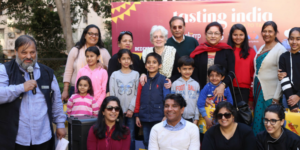
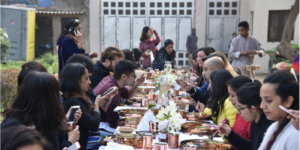
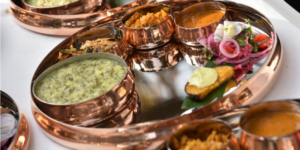
Photo: Tasting India Symposium
As a middle-income country with a large agricultural sector and population, what food system issues does India face?
In the last half century, India’s food production has multiplied 3.7 times while its population has increased by 2.55. This has resulted in a 45% increase in per person food production, making India not only self-sufficient but also a net food exporting country. Yet, India is home to 194.6 million hungry people — the highest number in the world.
In the last five years, food loss and waste has increased in India during harvest and post-harvest processes. In 2015, the highest losses were observed in fruits and vegetables (4.6 to 15.9 per cent), pulses (6.4 to 8.4 per cent), and oilseeds (5.3 to 9.9 per cent). Water is also wasted, as the country’s agriculture sector uses two to three times more water to produce one ton of food grains than China, Brazil or the United States.
Increased food production has negatively affected the environment with an estimated 5.3 billion tons of soil eroded annually due to indiscreet and excessive use of fertilisers, insecticides and pesticides.
One of the Symposium’s initiatives is the Eat Like Your Grandmother campaign. Why did you start this?
Launched in 2017, ‘Eat Like Your Grandma‘ was a cooking contest that gathered 10 teams of Little Chefs, grandmas and one cool grandpa to cook creative dosas and pancakes using Slurrp Farm’s Millet Pancake and Dosa Mixes. In addition to this basic mix, each team added a secret ingredient that has been passed down through the generations. The campaign showcased how a sustainable food culture begins at home and why we need to return to the food traditions of our grandparents– local, traditional and seasonal. This super-fun contest was judged by the talented Chef Anahita Dhondy, pastry Chef Ruchira Hoon Philip and myself. The winners were awarded large Slurrp Farm hampers!
What do you want people to take away from this campaign? How does this speak to the wider food system?
The campaign’s central message is that we have no choice but to return to home cooking with local, seasonal, chemical-free ingredients. This is the foundation of a sustainable food culture. To drive this message closer to home, we need to sensitise the new generation against junk foods and reflect the biodiversity of our planet on our plates with the inclusion of local cereals, vegetables and fruits.
These individual efforts will form wider social movements against mono-crop agriculture, chemical use in food production, over-consumption of refined carbohydrates and sugars and the growing carbon footprint of the meat industry. Our past offers solutions to many of these challenges.
How has India’s food culture, traditions and practices changed in recent generations?
Fast food gained popularity through the introduction of business process outsourcing (BPO) companies. The increase in BPOs meant that employees, especially those working the night shift, lapped up the convenience of, say, pizzas being delivered to work stations. The BPO generation was also the first from small-towns to have disposable incomes with which to savour the ‘good life’ of the big cities. The food industry followed suite with the country’s largest milk producer, Amul, introducing a best-selling line of pizza cheese (mozzarella) and a heat-and-serve pizza.
India’s food cultures are starting to shift again. With growing concern over rising school-age obesity, more and more families are moving away from flawed ‘western’ diets to simpler, more planet-friendly foods consumed by our grandparents. This shift is gradually being echoed in India’s food industry with growing markets for traditional, chemically-free agricultural produce and mounting interest in a sustainable food culture.
Photo: Tasting India Symposium
What work is being done to promote India’s “lost foods”?
Some of India’s ‘lost foods’ include millet, amaranth, fox nuts, black eyed peas and kidney beans. The promotion of millets, a cluster of cereals once regarded as the “poor man’s food”, has recently been named a national objective by the Government of India. As a “powerhouse of nutrients”, millets are packed with calcium and help to reduce post-dinner blood glucose levels, a key health benefit for India’s large diabetic population. As millets require the least water of all cereal crops, they are ideal for rain-fed agriculture that makes up 52% of the country’s agriculture sector. As a climate-smart crop with nutritional benefits, millets can significantly improve the country’s food and nutrition security.
Unlike millets, other “superfoods” have not received much investment from national and state governments. The private sector has started to fill this gap by becoming increasingly involved in saving wetlands to protect water lilies from which makhana or fox nuts originate.
Eat Like Your Grandmother encourages society to look to the past to answer current sustainability issues. What role does technology and innovation play in food sustainability?
Eat Like Your Grandmother will act as a bridge between our past’s wisdom and our planet’s future. Technology and innovation are integral to the success of the campaign. This explains why we teamed up with Slurrp Farm- a company using technology to develop new recipes for favourite foods using millet such as a millet-based dosa. In this way, Slurrp Farm aims to make traditional, earth-friendly cereals more appealing to the general public. While the inspiration comes from our mothers and grandmothers, technology and innovation shape the solutions.
How can this project inform sustainability efforts happening in other countries?
Each country has its own vibrant food traditions that are planet friendly. We need to draw on these traditions and ageless wisdom to develop contemporary solutions that can support growing populations with sustainable agriculture. We could work together with the SDG2 Advocacy Hub to organise international round-tables and events that identify traditions and discuss ways to use this wisdom to create solutions.
Photo: Tasting India Symposium
What do you most enjoy eating?
Mum’s home-cooked food — and I miss it terribly when in Sweden. Having had the opportunity to live in different parts of India, our family table showcases amazing regional delicacies. I made a secret mission of teaching these recipes to people so they could invite me over and cook Mum’s food. As a way of preserving my food heritage, I host South Indian and North Indian cooking classes in Stockholm. I love when my cookery students make Mum’s home recipes to perfection, sending me to my food heaven.
Ways to engage:
- Follow Tasting India on Facebook, Twitter and Instagram
- Launching India’s Action Hub in December
- Get involved in Tasting India’s upcoming Eat Right Symposium from the 13th to 15th of December
The aims of the Eat like your Grandmother campaign to protect biodiversity and celebrate local, seasonal food are championed by the Chefs’ Manifesto. Read about further actions identified and adopted by chefs around the world as outlined in the Action Plan. Through the Chefs’ Manifesto and Action Plan, the SDG2 Advocacy Hub aims to build a community of chefs around the world, equipped with a simple set of actions to drive progress against the food issues that matter most to them. Working together we can help deliver a better food system for all. Join us.




